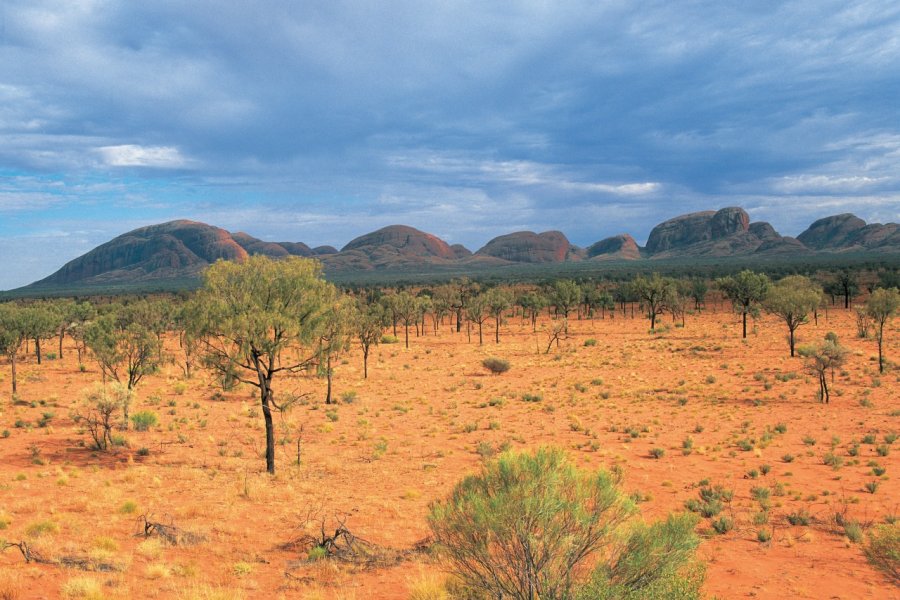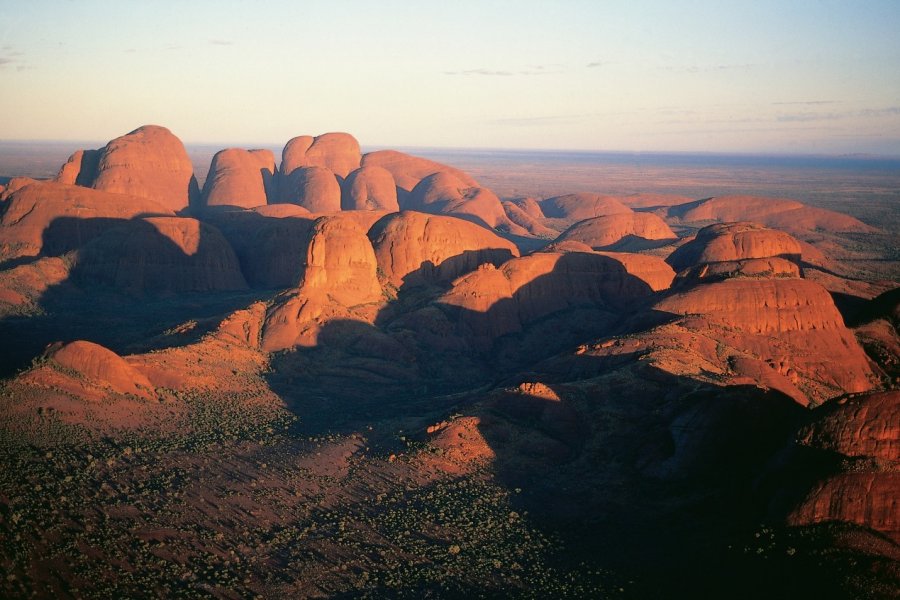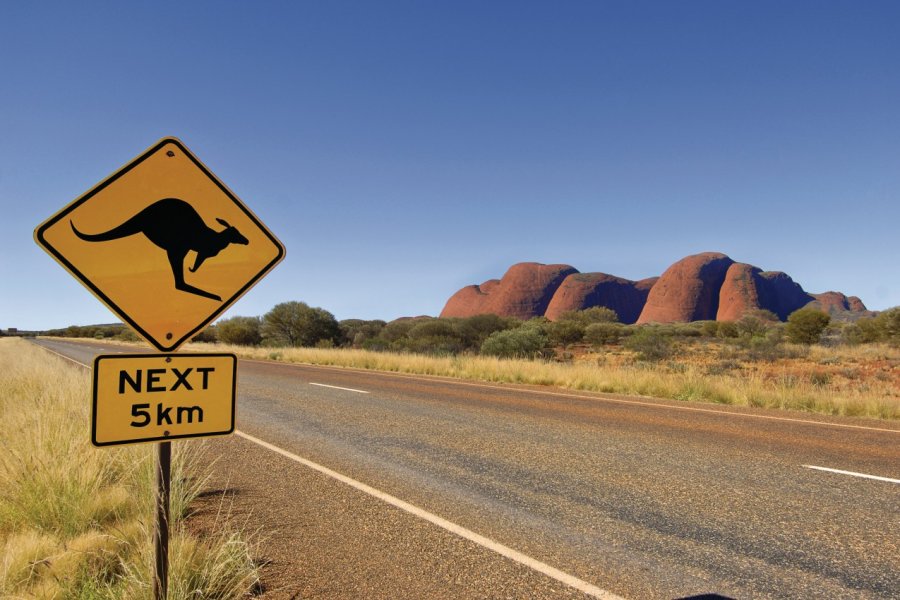Travel Guide Kata Tjuta (Les Olgas)
Find an accommodation
Advertising
In the distance Kata Tjuta (The Olgas) seems to be a simple cloud escaped from the plain. One is often surprised to see this rock formation so close to Uluru and yet so unknown. It is a set of 36 red sandstone domes, spread over an area of 35 km². Kata Tjuta means "many heads" and, according to the aboriginal legends, these rocks would be as many petrified giants. The whole looks like gigantic skulls. Among them, Mount Olga culminates at 1,070 m above sea level. Like Uluru, it received its name in 1872 from the explorer Ernest Giles, in honor of Queen Olga of Württemberg (1822-1892), second daughter of Nicholas of Russia. Less visited than Uluru, Kata Tjuta is also a little more intimate, amazing and pleasant to discover by yourself. Kata Tjura is a big half-hour drive from Uluru. As with Uluru, the views of Kata Tjuta are best at sunset and sunrise. Make sure you are in the right places, as indicated on the park map, otherwise you may be disappointed. A must is to watch the sunrise at the Kata Tjuta Dune Viewing, which offers a 360 degree view of the site. At sunset, you will see the silhouette of the rocks, offering changing colors until becoming a deep red! A magical, beautiful, serene moment. The walk to the Valley of the Winds offers spectacular and breathtaking views.
Suggested addresses Kata Tjuta (Les Olgas)
Weather at the moment
Advertising
Organize your trip with our partners Kata Tjuta (Les Olgas)
Transportation
Book your plane tickets
Car Rental
Boat rental
Accommodation & stays
Find a hotel
Holiday rental
Find your campsite
Tailor-made trip
Immersion travel
Services / On site
Activities & visits
Find a doctor
Kata Tjuta (Les Olgas) travel inspiration
Find unique Stay Offers with our Partners
Pictures and images Kata Tjuta (Les Olgas)
Other destinations nearby Kata Tjuta (Les Olgas)
100 km away







